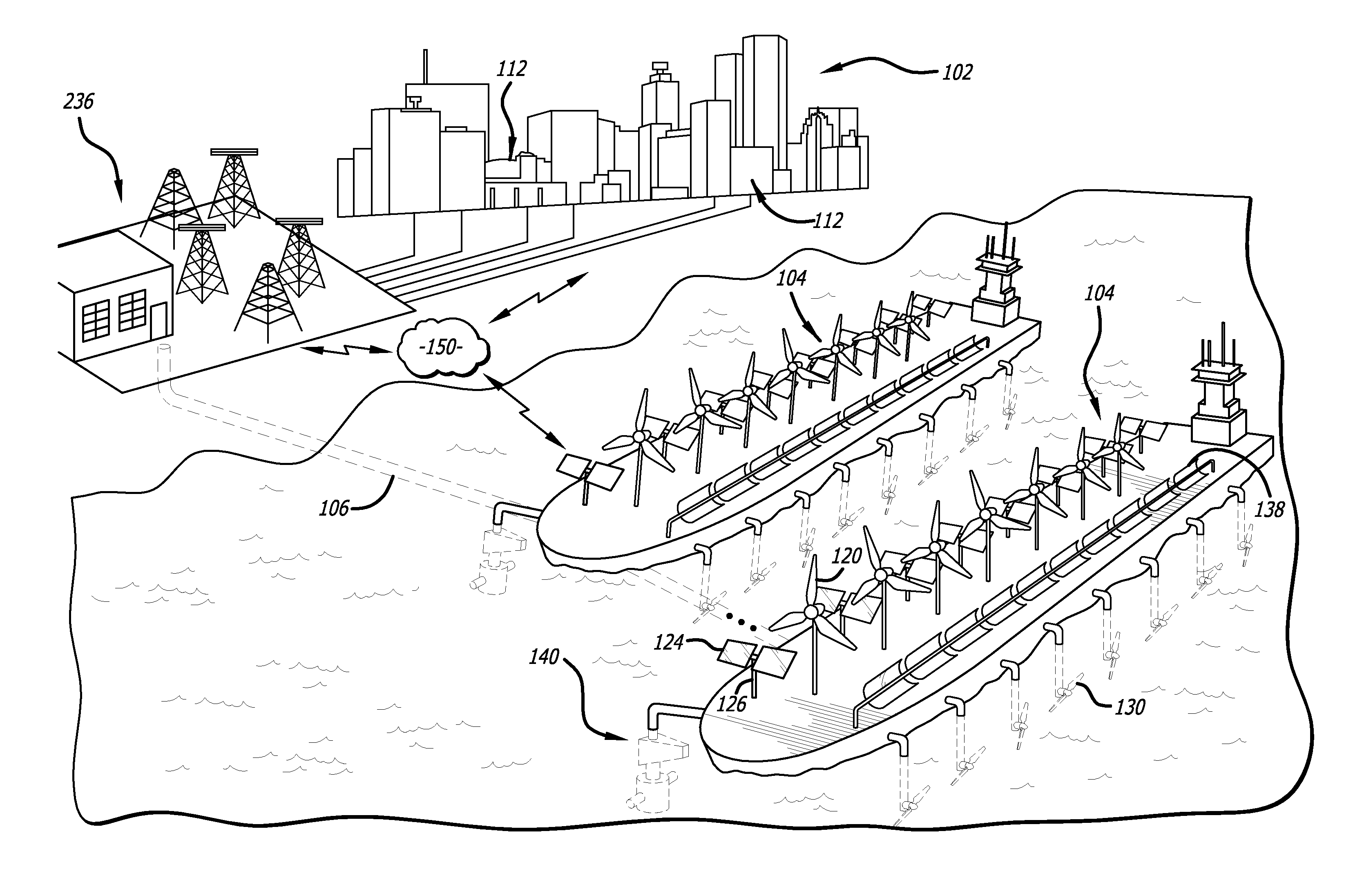Multi-resource renewable energy installation and method of maximizing operational capacity of same
a renewable energy and multi-resource technology, applied in the field of renewable energy resources, can solve the problems of inherently unreliable, low-cost, efficient and continually viable sources of electricity, and many limitations of current energy infrastructur
- Summary
- Abstract
- Description
- Claims
- Application Information
AI Technical Summary
Benefits of technology
Problems solved by technology
Method used
Image
Examples
Embodiment Construction
[0031]In the following description of the present invention reference is made to the accompanying figures which form a part thereof, and in which is shown, by way of illustration, exemplary embodiments illustrating the principles of the present invention and how it is practiced. Other embodiments will be utilized to practice the present invention and structural and functional changes will be made thereto without departing from the scope of the present invention.
[0032]The present invention discloses an energy management system and method for power transmission to an intelligent electricity grid from a multi-resource renewable energy platform, an offshore multi-resource renewable energy installation and method of maximizing its operational capacity, and a renewable energy-based electricity grid infrastructure and method of its operation and automation. Each of these embodiments achieves one or more of the objectives of the present invention.
[0033]These include, but are not limited to,...
PUM
 Login to View More
Login to View More Abstract
Description
Claims
Application Information
 Login to View More
Login to View More - R&D
- Intellectual Property
- Life Sciences
- Materials
- Tech Scout
- Unparalleled Data Quality
- Higher Quality Content
- 60% Fewer Hallucinations
Browse by: Latest US Patents, China's latest patents, Technical Efficacy Thesaurus, Application Domain, Technology Topic, Popular Technical Reports.
© 2025 PatSnap. All rights reserved.Legal|Privacy policy|Modern Slavery Act Transparency Statement|Sitemap|About US| Contact US: help@patsnap.com



